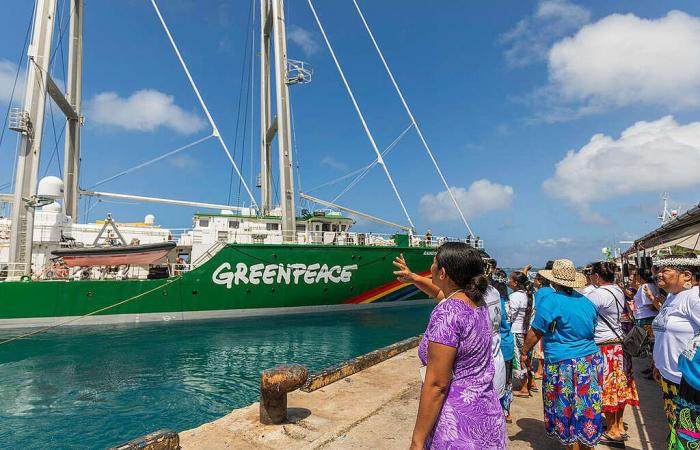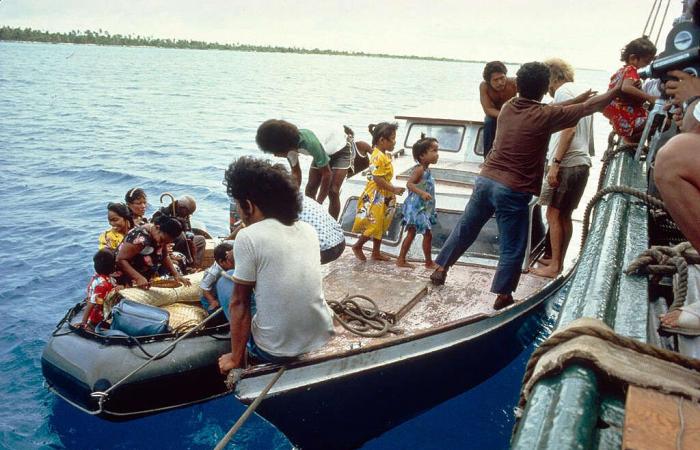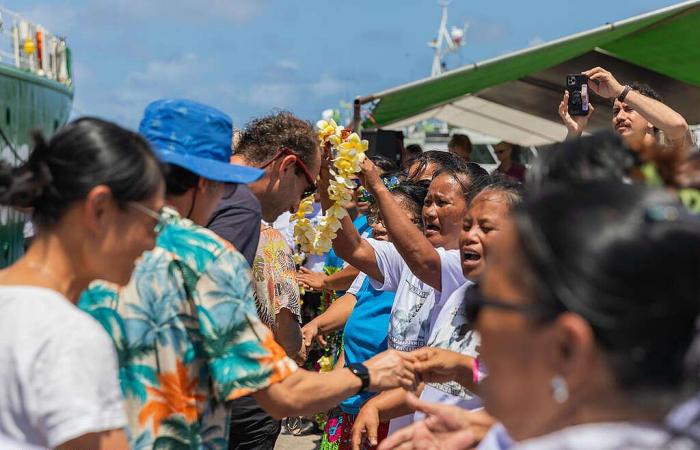The Rainbow Warrior first of the name Cingle in the Pacific Ocean, in the direction of Marshall Islands. We are in May 1985. Two months later, the emblematic boat of Greenpeace lined at the bottom of the port of Auckland, new Zealand, the shell torn by two bombs. Fernando Pereira, photographer and member of the crew, died in this attack perpetrated by French secret services. Today, everyone knows “the affair of Rainbow Warrior ». But who remembers the last expedition that had led him there?
It is this expedition that we will tell you today, while the Rainbow Warrior Third by the name is back in the footsteps of his big brother, 40 years later today, in Pacific waters.
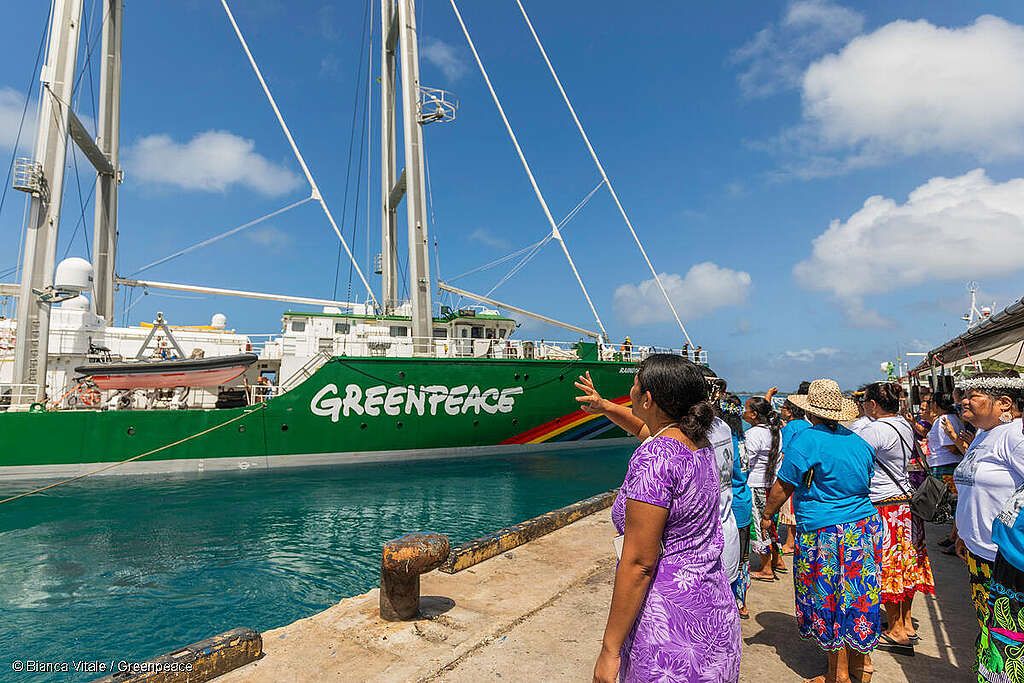
Mars 2025, © Bianca Vitale / Greenpeace
Nuclear guinea pigs
In the Marshall Islands, between 1946 and 1958, the United States led 67 nuclear testsespecially on the atolls of Enewetak and Bikini, with devastating consequences. On March 1, 1954, the bomb ” Castle Bravo », With a power 1000 times greater than Hiroshima, detonates on Bikini and projects radioactive fallout on thousands of square kilometers, especially on the inhabited atoll of Rongelap150 km away. Rongelap’s children think he is snowing and starting to play outside. In the radioactive environment, every minute counts … It was only after three days that the US government evacuates the residents of Rongelap to a more distant atoll, before sending them home three years later, saying that the place was again “sure” …
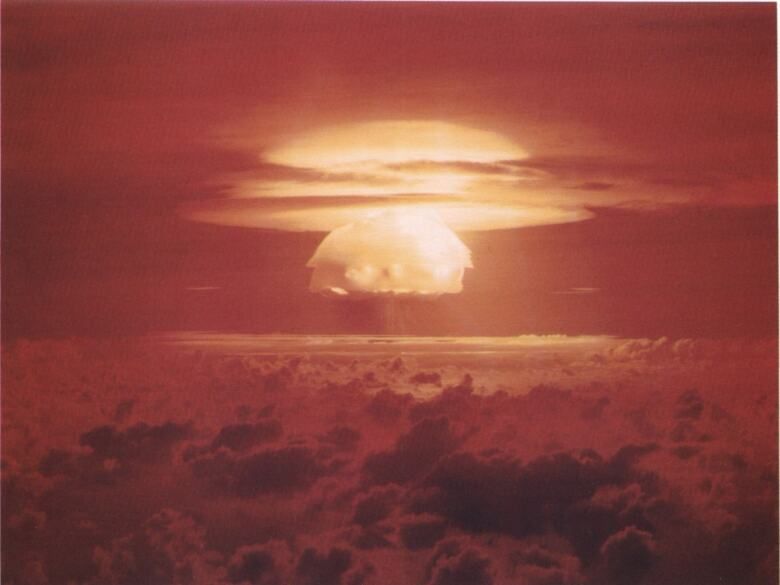
© US Department of Energy
THE nuclear explosions in the Marshall Islands have led to a radioactive contamination of soils, waters, food… During the decades that followedof the maladies As cancer multiplied on the atoll where the inhabitants had returned. Many women have made false layers or given birth to babies suffering from serious malformations. The population of Rongelap served as a guinea pig for the American army which, as part of the 4.1 projectobserved years during the Effects of radiation on human beings.
Faced with the inaction of the United States and the international community concerning their fate, a Marshallais senator from Atoll, an Jeton Anjain, ends up with Contact Greenpeace In 1985 to ask the NGO to help its people evacuate the contaminated and uninhabitable atoll.
Mission Exodus
Forty years ago, Greenpeace therefore received a call for the help of Rongelap. The crew of Rainbow Warrior will respond to this call and will set sail for the archipelago.
In May 1985, the crew of Rainbow Warrior will therefore carry out his last shipment by boarding the entire population of Rongelap aboard the boat to take it to another unused atoll. It took 11 days and three round trips to transport the approximately 300 inhabitants and their personal effects.
This solidarity missionbaptized Exodusthe crew led him without an banner or slogan, but with a camera. That of FERNANDO PEREIRAthe Greenpeace photographer, killed a few weeks later in the attack on Rainbow Warrior. Here are his latest shots, which document l’forced exodus of an entire population due to nuclear madness.

The expedition that will not take place
Once the exodus mission has been completed, the crew went to New Zealand, in the port of Auckland. After a few days of rest, he had to head for the French Polynesia, another area of the Pacific also victim of nuclear explosions led by another colonial power, France. The Rainbow Warrior had to drive a protest flotilla at Morroragainst French nuclear tests … the French state used worst means To prevent this peaceful and ecologist challenge from taking place.
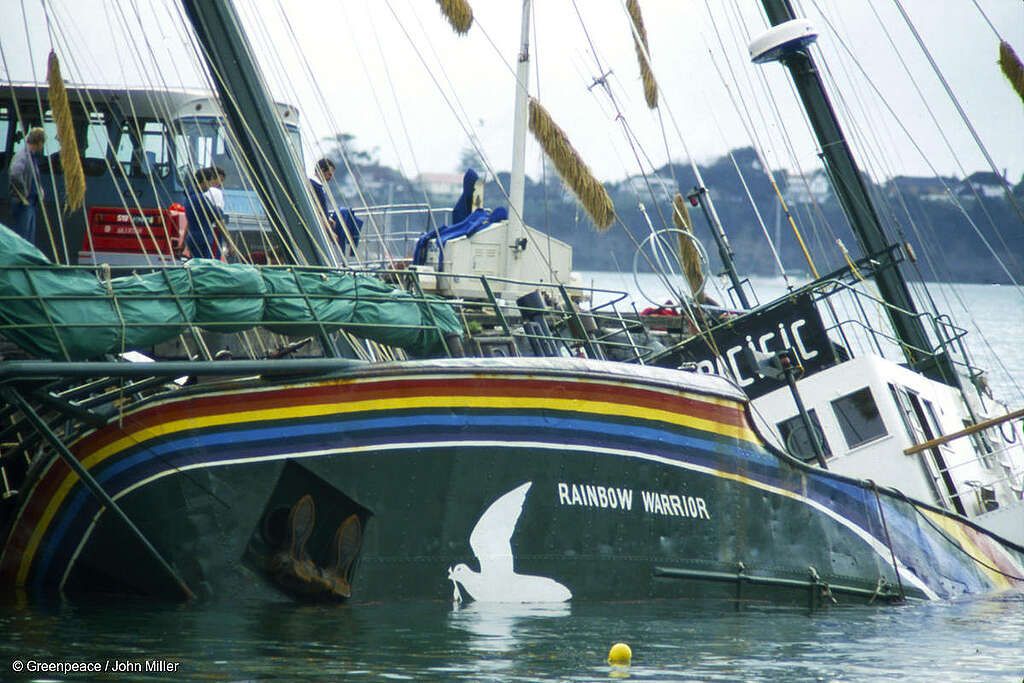
July 1985, © Greenpeace / John Miller
Greenpeace still in solidarity with the Marshallais people
Today, there is still no cancer clinic in the Marshall Islands. THE consequences of nuclear explosions have repercussions on generations of inhabitants, who have been seen refuse the right to justiceappropriate medical care and a repair complete losses and damage suffered.
Forty years after helping the residents of Rongelap to leave their contaminated lands, it is again at the invitation of the Marshallais people that Greenpeace returns to these islands. For six weeks, the Rainbow Warrior III will browse the various atolls of the country to collect testimonials and lead scientific research On the levels of cancellation in order to support the legal proceedings initiated by the Marshallais government to the United States and the UN and to relay its request for justice and reparation.
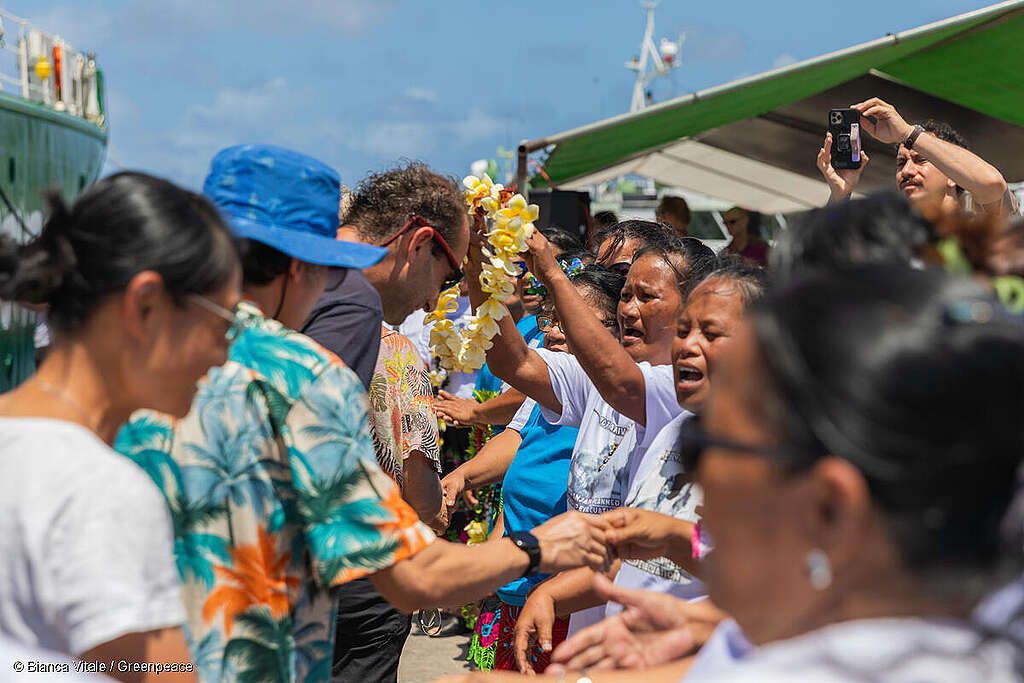
Mars 2025, © Bianca Vitale / Greenpeace
At the end of its current mission in the Marshall Islands, the Rainbow Warrior III will go next July to Auckland, New Zealand, to commemorate the 40th anniversary of the attack who sank his predecessor. Of course, by then, we will tell you about Next steps of this new expedition to the Pacific. Our determination remains intact, our fight against nuclear madness continues and seems to us today more fair than ever.
You can sink a boat, but you can’t run a rainbow!


